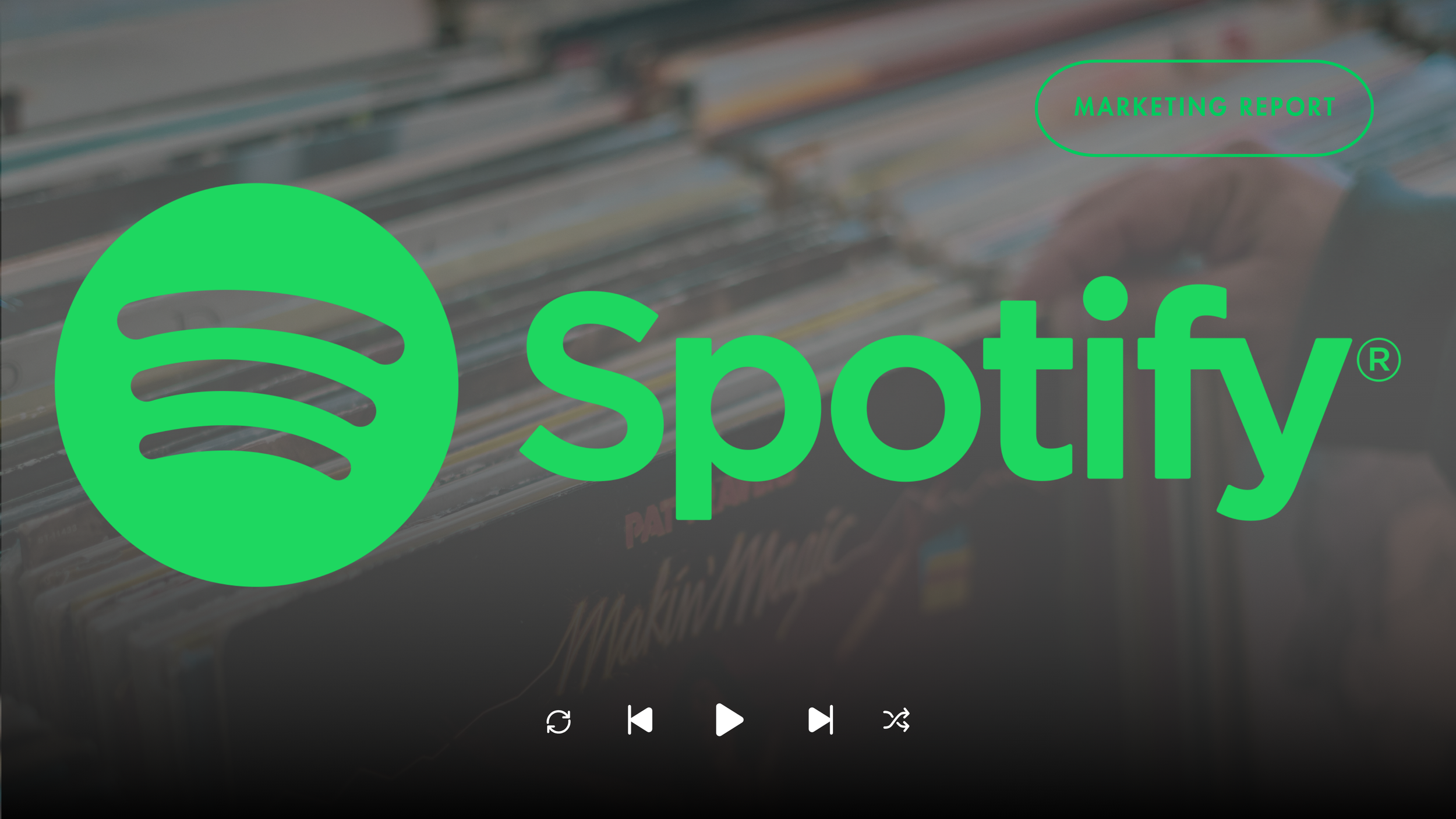Spotify: Freemium Growth, Personalization, and Conversion
Marketing Strategy | Course Group Project
Project Overview
Timeline: Mar - Apr 2024
Team Members: Ankit, Tuhina, Yujie, Theresa, Qiao
Core Deliverables: Company analysis & market report + presentation deck synthesising history, mission, 2019–2023 revenue/user growth, competencies & SWOT, competitive table, and consumer journey mapping.
Project brief
Our team analysed Spotify’s business model, market position, and sustained leadership through personalization, emotional marketing, and a freemium-to-premium conversion strategy. We grounded the work in company fundamentals (history, mission, financials), competencies & SWOT, competitive analysis, consumer segmentation and buying journey, and an execution playbook that balances growth with cost/royalty realities. Spotify’s scale (revenue up from $7.3B → $14.7B, 2019–2023; MAUs 248M → 600M) and culture of data-driven creativity (e.g., billboard/Wrapped) were our starting points.
Company & market context
Spotify is a Swedish audio streaming platform with 600M+ MAUs and a catalogue of 100M+ tracks operating in 184 markets. It is built on a freemium model that fuels top-of-funnel data and converts a significant share of free users to paid subscribers. We highlighted the brand’s innovative culture, data analytics & recommendation engine, and social-first, emotionally resonant marketing as core drivers of scale and engagement.
Competitive analysis shows Spotify leads with a ~31.7% global share versus Apple, YouTube, and Amazon. The competitors differentiate via sound quality, ecosystem lock-in, or bundled value. Spotify leans on on superior personalization and horizontal partnerships (e.g., Starbucks, Uber) to drive >30% free-to-paid conversion, whereas Apple has vertical alliances across labels, artists, and classical institutions and higher per-stream payouts.
User & journey insights
Segmentation shows a youth-skewed base(29% millennials; 26% under 24), with daily music and weekly podcast habits. We mapped the Moments of Truth for Spotify Ads (BE → DREAM → CHOOSE → BUY → USE) to identify the % of listeners that report needs met at each stage, informing messaging and placement and connecting campaign goals to funnel stages.
Competencies & SWOT
Strength in personalized music selection, large user base, and viral, data-driven campaigns; constraints from royalty costs and dependence on third-party content; opportunities in podcasts, partnerships, and advertising innovations; threats from competition, regulation, and piracy.
Problems we prioritised
Conversion to premium vs. data needs: need a large free base for personalization but premium for revenue, creating a persistent conversion tension.
Royalty cost and third-party content dependence depress margins and constrain exclusivity.
Music piracy/stream-ripping undermines value capture and artist trust.
Strategy & recommendations
Nudge-led conversion: Social/referral discounts, seasonal/event exclusives, limited-time premium sound trials, situational prompts (e.g., after heavy feature use), and calibrated ad load for free users to signal value without eroding experience.
Vertical efforts upstream: Expand exclusive tie-ups (POP), assess an original label for durable POD and better unit economics, and diversify content into education/health & wellness (4D framework).
Engagement flywheel: Gamification, social listening, deepen personalization, and concert/ticketing tie-ups (Vivid Seats/Eventbrite/Ticketmaster) to deepen habit formation and ARPU. Keep brand heat via data-driven campaigns (e.g., Wrapped).
Anti-piracy stance: Pricing tiers, education, ISP partnerships, and policy advocacy to reduce stream-ripping and reinforce artist economics.
Roadmap & Metrics
Phase 1 (90 days): A/B test nudge catalogue across the BE/DREAM/CHOOSE stages; track free→paid conversion, ad ARPU, time-spent.
Phase 2: Scale exclusives and wellness/education pilots; measure retention, churn and LTV uplift. The current percentages measured at each stage of the customer journey will be used as benchmarks to set the specific targets/KPIs for that stage.
BE (Awareness): 65% say Spotify meets their needs here; 33% of listeners first consider the brand at this stage. Aim 68–70% next cycle; track reach, ad recall, CTR.
DREAM (Discovery/Consideration): 66% needs-met baseline. Target ≈69%; track playlist saves, adds-to-library, time-spent with recommended content.
CHOOSE (Evaluation): 65% needs-met baseline. Target ≈67%; track plan-page visits and trial starts.
BUY (Conversion): 65% needs-met baseline. Target ≈68%; track upgrade rate and cost per paid start.
USE (Post-purchase/Retention): 64% needs-met baseline. Target 66–68%; track 90-day retention, churn, ARPU, referrals.
Risks & mitigations
Royalty inflation and content reliance compress margins and limit differentiation. Spotify can counter with upstream deals and originals (selective exclusives, performance-based rev-share, multi-year contracts with cap/floor mechanics), continued build-out of owned IP (podcasts/learning/wellness), and a pricing architecture that aligns ARPU with LTV across geos and family/duo tiers. Piracy and stream-ripping dilute value capture. Potential mitigations include tiered pricing and ad-supported access to reduce incentives to pirate, audio fingerprinting/watermarking and automated takedowns, plus ISP/policy partnerships and artist education to tighten enforcement. Competitive lock-in from vertically integrated rivals is addressed by pushing differentiated personalization (contextual, mood, and social signals), expanding cross-ecosystem partnerships (telcos, OEMs, auto, smart speakers), investing in portability and community (one-click playlist migration, social listening, live/event tie-ins), and bundling selectively where it improves conversion without eroding the brand.
Expected impact
Higher free→paid conversion, stronger artist relationships via upstream moves, new revenue lanes (education/wellness, events), and a tighter brand-loyalty loop through social/viral features while addressing profitability through content control and smarter ad monetization.

